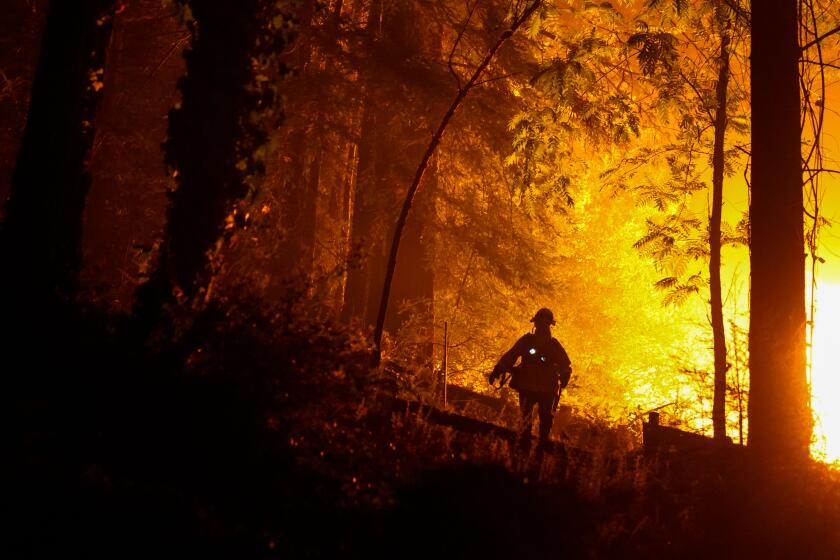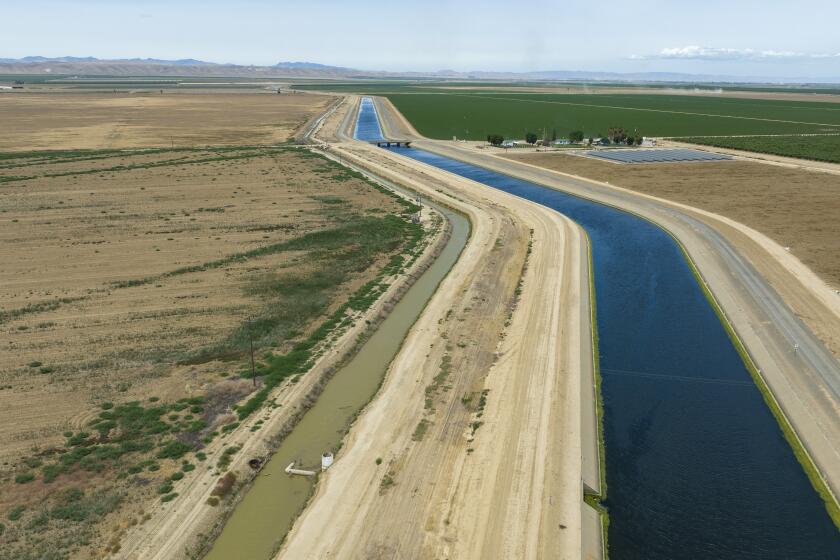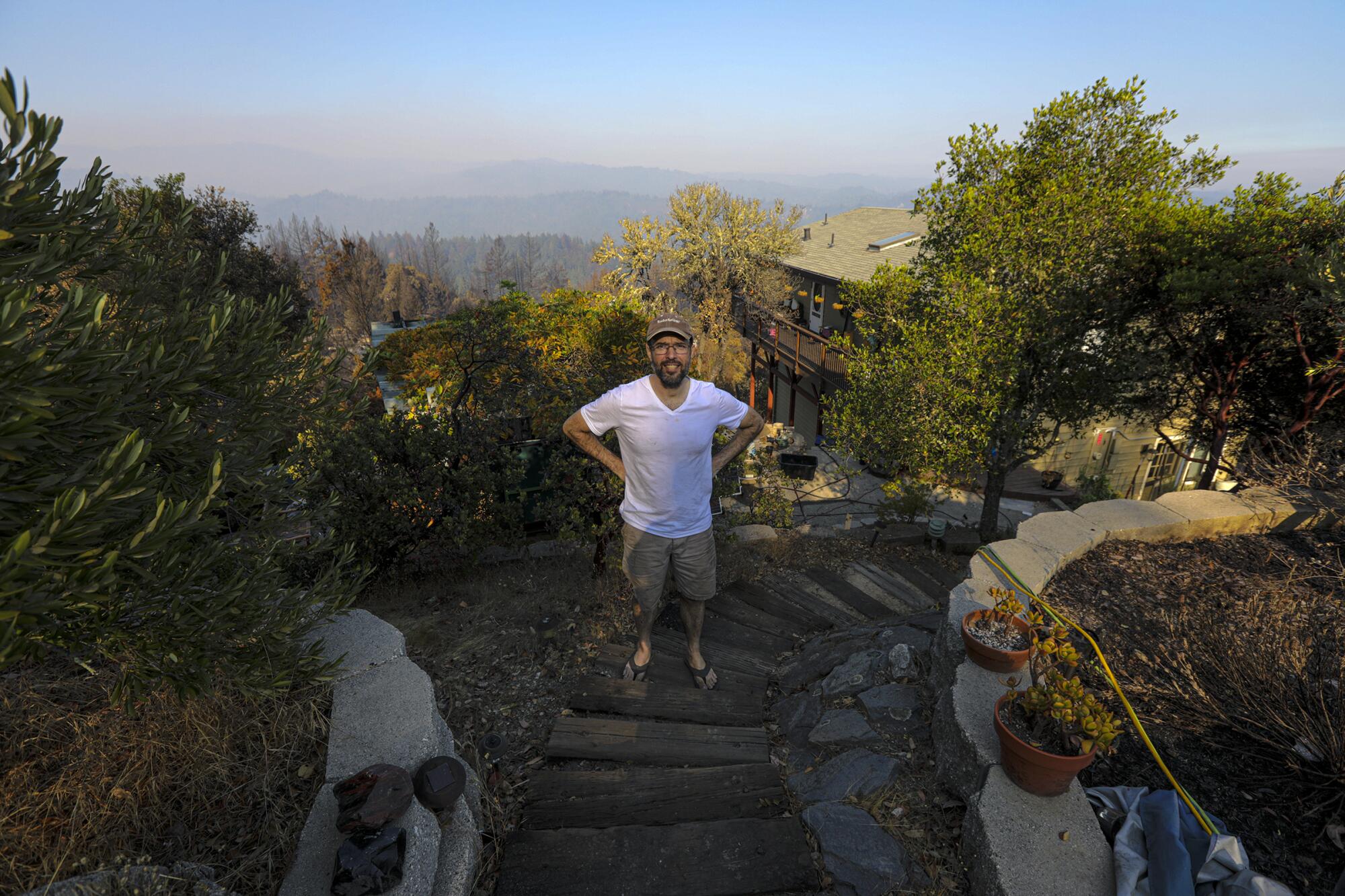
- Share via
BOULDER CREEK, Calif. — When authorities ordered Noah Standridge to evacuate his home amid the CZU Lightning Complex fire two weeks ago, he refused to flee. Instead, he stayed behind to knock back the flames encroaching on his hilltop Boulder Creek house — wearing nothing but a T-shirt, shorts and flip-flops.
Late last week, Standridge stood on the porch of his home — encircled by an entire neighborhood burned to the ground. He recalled how slowly the fire moved, and is convinced that much of that destruction was totally preventable.
“I used a water-filled flower pot and my feet to keep it back,” said Standridge, a former lecturer at Stanford University, husband and father of five children ranging in ages from 6 to 17. “The only reason my house is the only one still standing is because I stayed here to defend it.”
Standridge and scores of other residents throughout Boulder Creek and Bonny Doon defied evacuation orders as the CZU fire moved through the Santa Cruz Mountains during the last two weeks of August. They are now stuck in the mountains, reluctant to leave, fearing that public safety officers won’t let them return home if they travel out to secure food, water and other necessities.
Usually in California, a fire blows through and homeowners are allowed back to their homes — or what is left of them —in a few days. In the CZU fire, the flames are so spread out and in such rugged territory, the process is different. Evacuation orders are slowly being lifted for some areas, but authorities have suggested that the hardest hit parts of the fire zone could be shut down for weeks — as power lines and roads are repaired.
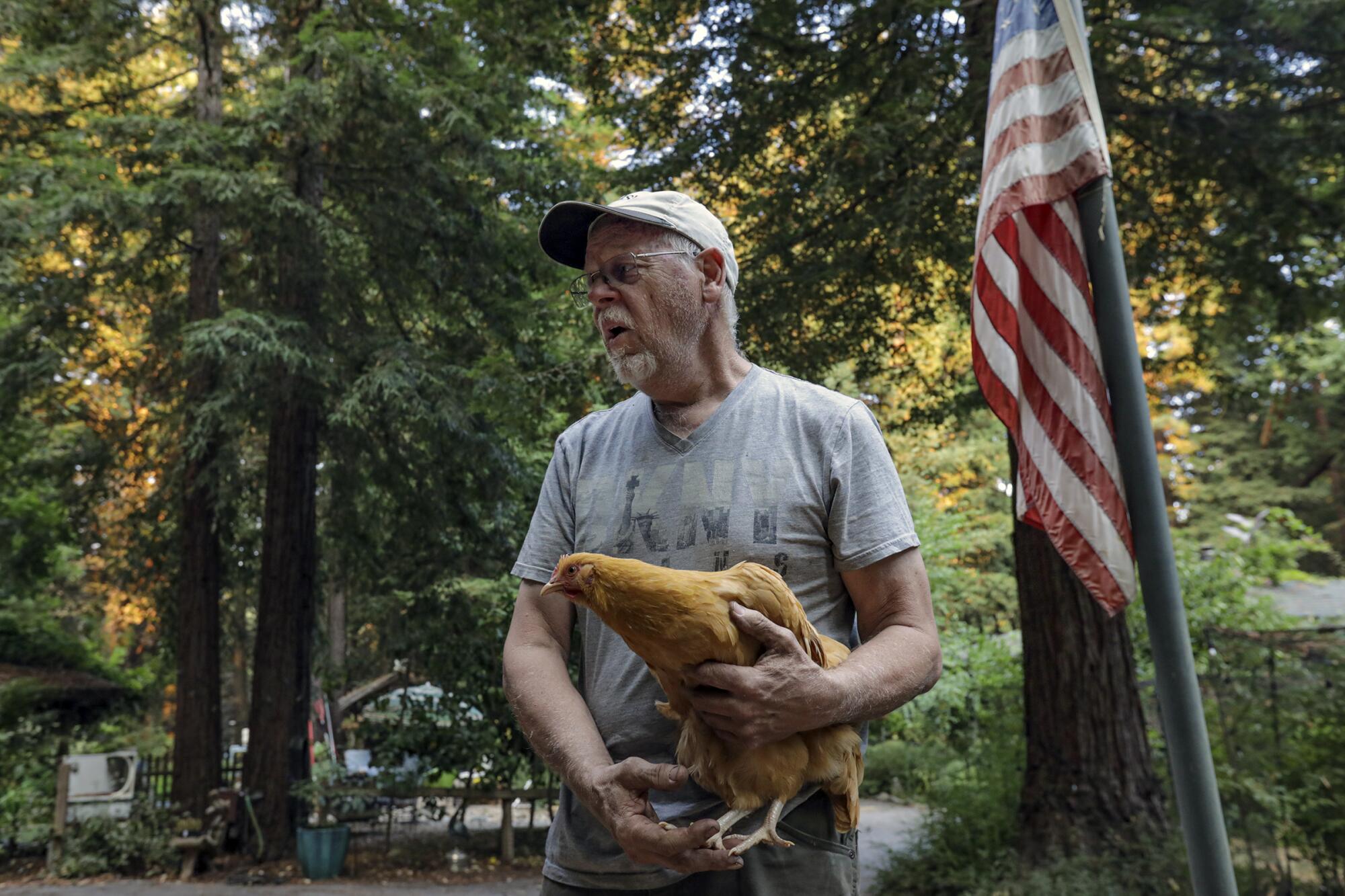
Many, like Standridge, are living off of non-perishable food supplies left in their homes — such as peanut butter, cans of sardines and ramen noodles. Others, like Dutch Schultz, a retired electrician who lives in Bonny Doon, have ponds of bass, blue gill and crawdads, as well as chickens and fruiting trees, with which to supplement their diets.
“I’m not a survivalist,” said Schultz, as he guided a team from the L.A. Times around his property. “But I always have made sure to have six months of supplies for six people. Just seems prudent.”
But the outside world is calling to them.
Standridge, for instance, is a Stage 4 colon cancer patient, and he needs to get chemotherapy in Santa Rosa next week. If he misses his appointment, he risks both his health and his ability to stay in the clinical trial.
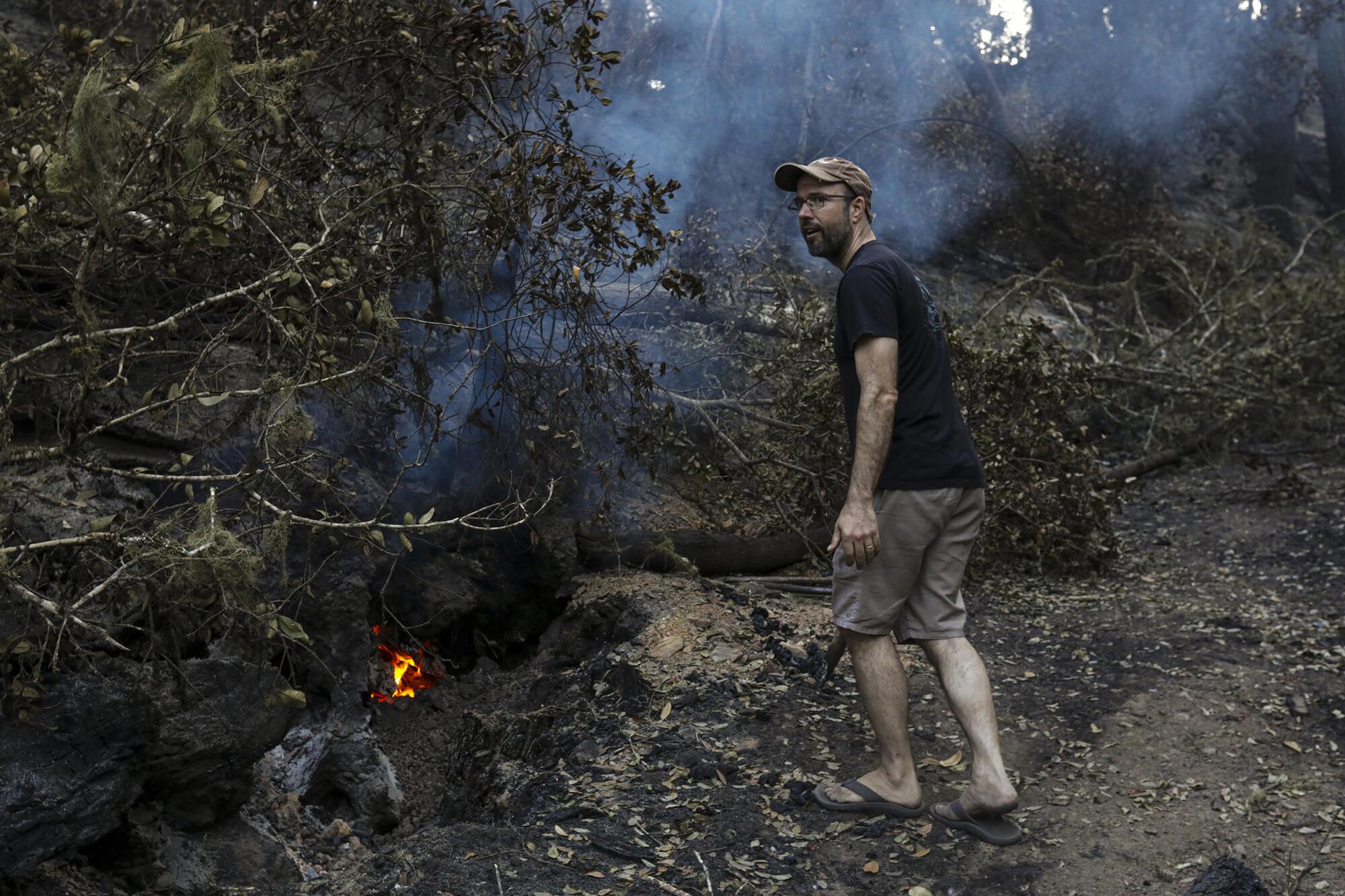
“But if I can’t get back in, I can’t defend my home,” he said, which he noted is not in imminent danger. As of Tuesday, the 85,000-acre fire had destroyed 1,200 structures and was 43% contained, with the flames recently dampened somewhat by cooler air and a heavy marine layer, that has been leaving dew on Standridge’s deck.
As he drove around the immediate neighborhood, however, he pointed to smoldering roots and flaming tree stumps, which he said could light a passing leaf on fire — potentially sending embers to his home.
“There’d be nobody here to protect this if I was shut out,” he said.
They couldn’t get help from the state. Or the feds. So volunteer firefighters in two Santa Cruz mountain towns tapped an elite network of emergency responders.
Schultz, who said he is tending to several senior citizens in his area who also refused to evacuate, is aching for company.
He’s lonely without his wife, TV or the internet. He’s relegated to watching old DVDs — admitting sheepishly to a visitor that he’s rewatched the movies “Tommy Boy” and “Princess Bride” several times over the last two weeks.
“But, if I leave, who’d be here to watch my house and my neighbors’ homes?” he said, referring to the seniors he cares for.
He said he initially left his home when the evacuation orders were first issued, but came back two days later.
The neighborhood around Schultz’s property, which abuts Empire Grade — a long, winding road that runs along a ridge running from just west of Boulder Creek down to Santa Cruz — was scorched: Trees blackened by the fire, the ground a uniform layer of gray ash, and the skeletons of burned cars, propane tanks and outdoor sheds littering the horizon.
The fire took a seemingly haphazard path — whole neighborhoods were destroyed, with one house or garden untouched among the carnage.
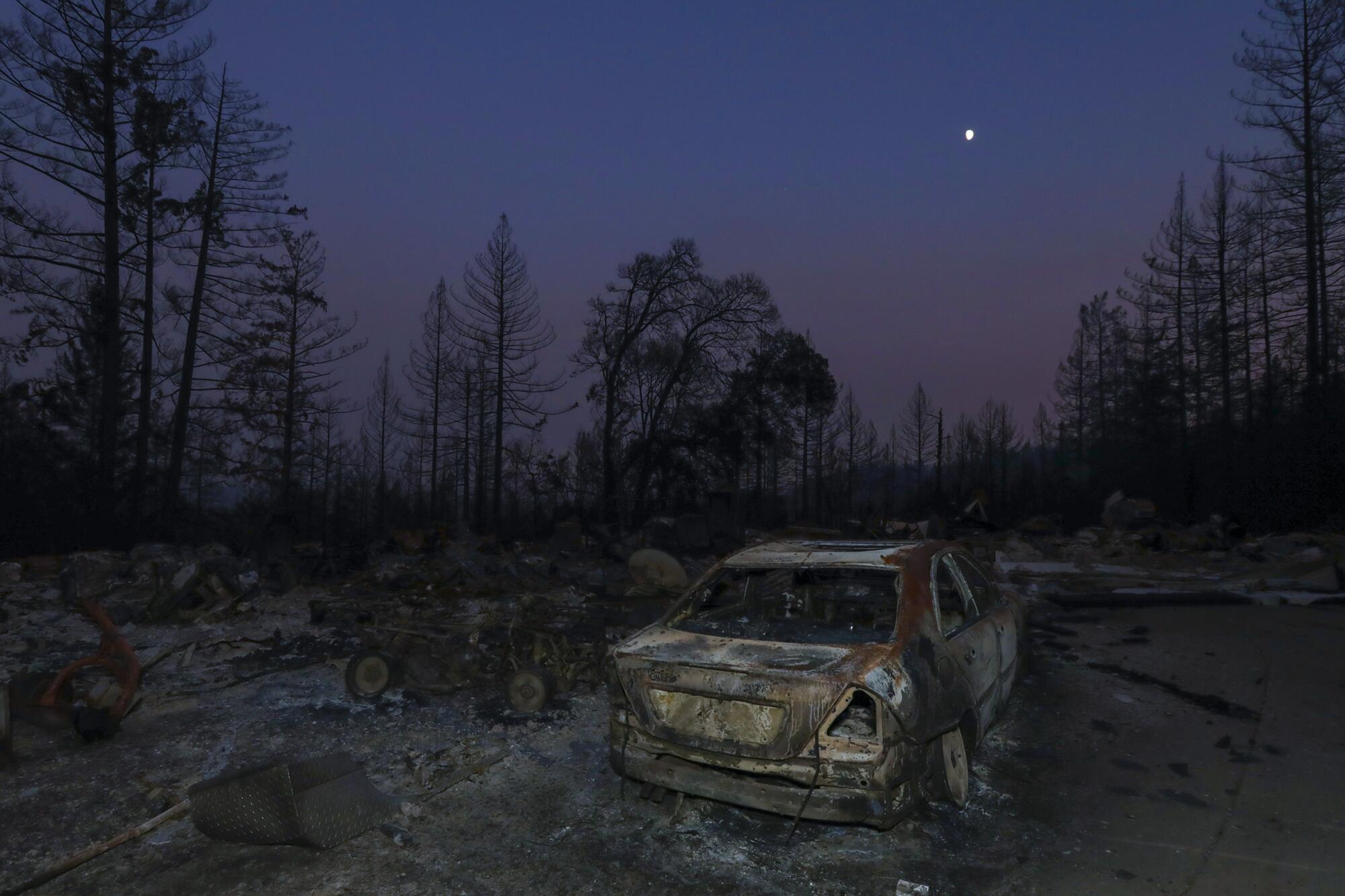
It’s left even seasoned firefighters perplexed.
“It’s crazy looking, right?” said Jim Czerniez, a Santa Clara County Fire Department captain, speculating the fires followed the path of erratic winds.
He and his crew were on the scene soon after the fires began Aug. 16. He said a few nights later, strong winds swept up the fire, and that a terrifying wall pushed along Empire Grade, burning everything in its path.
Roughly a week later, the fire had died down to a smoky ground fire, but because the state’s firefighting resources were stretched thin across the Bay Area responding to multiple fires in multiple counties and regions, fewer firefighters were on the scene than would ordinarily be there.
As residents read news accounts documenting the dearth of firefighting forces, many felt compelled to stay and fight.
While Standridge’s wife and children fled for safety in Los Altos, he stayed behind to protect their home.
“Frankly, I wish more of us had stayed,” said Standridge, pointing to a burned out fire engine on his neighbor’s charred driveway. “We could have used that.”
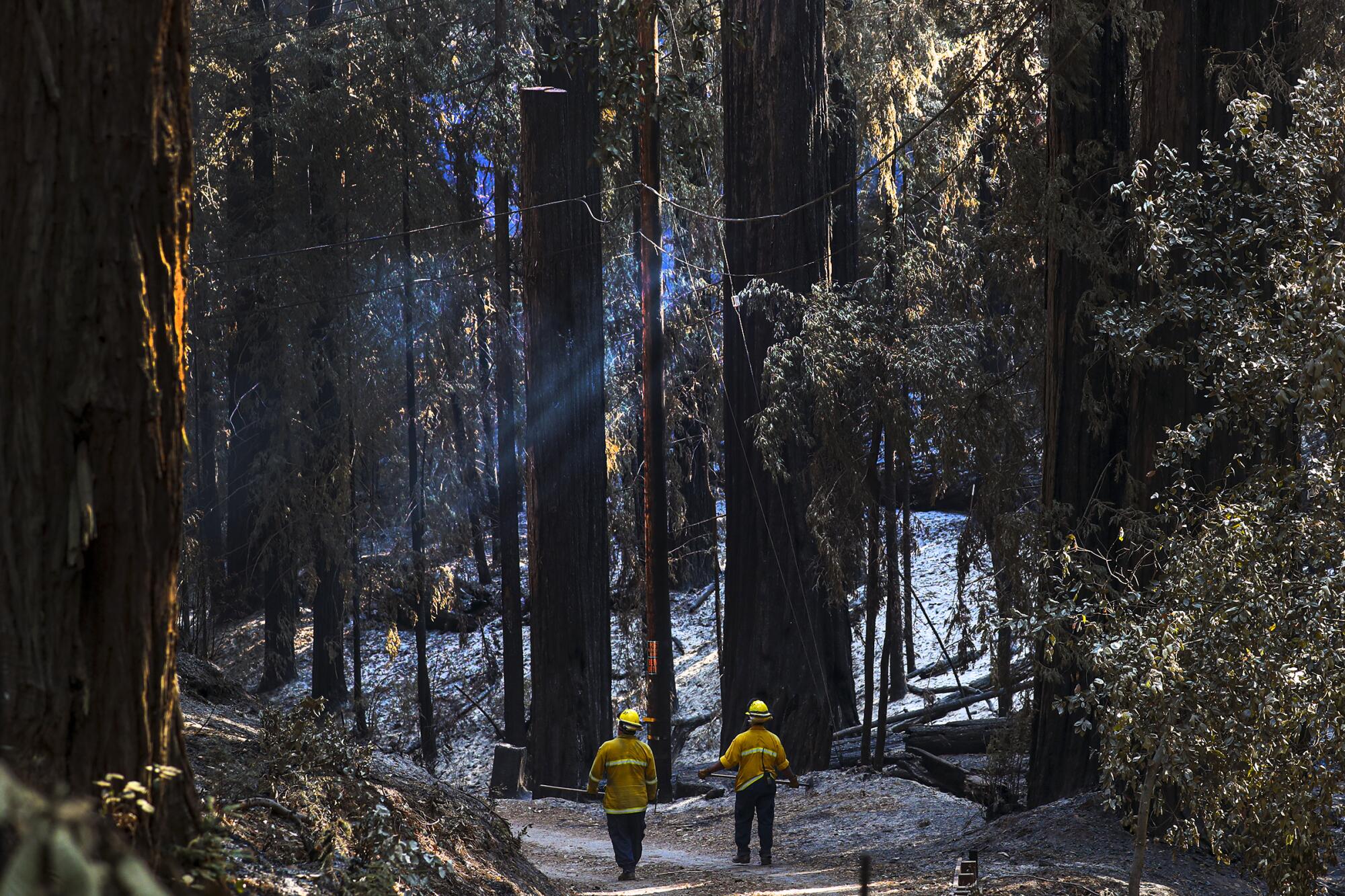
There is no official tally on the number of stragglers in the area who refused to leave. Estimates from residents and firefighters put the number north of 100 and south of 1,000 — with best guesses between 300 and 600.
California Department of Forestry and Fire Protection spokeswoman Lynne Tolmachoff said that in just about every California wildfire, some people refuse to leave.
She said the state’s firefighting force is not in the business of physically removing people from their homes, but cautions that those who stay not only endanger their own lives, but those of firefighters, and others who have stayed behind.
“If something happens to them and the firefighters have to respond to save them, then they’re not able to respond to fires or others who need rescuing,” she said.
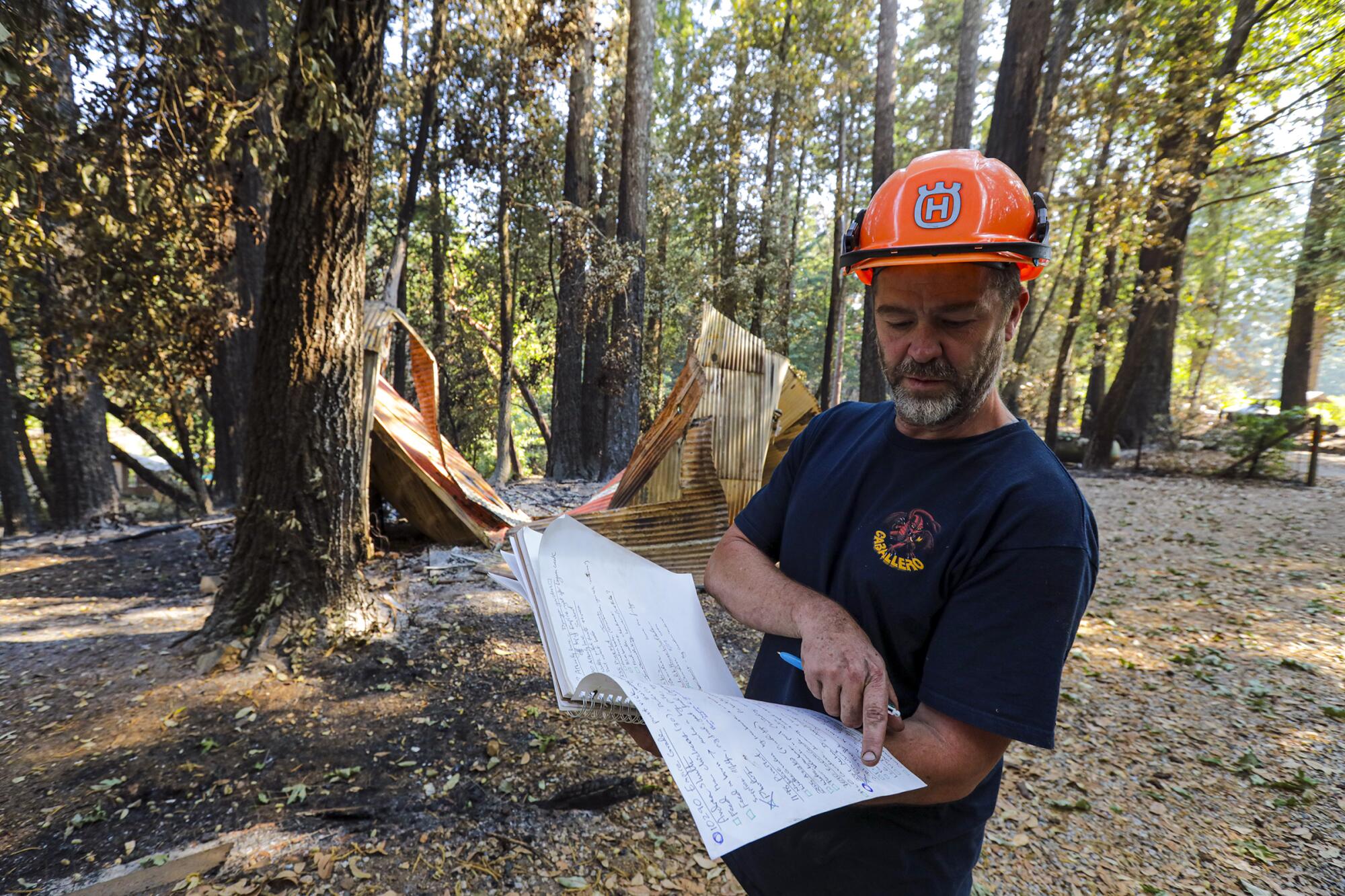
On Saturday afternoon, Chris Fink, a pediatric gastroenterologist with Stanford Children’s Hospital, and Jonah Torres, a cannabis distributor, were driving around Bonny Doon — tending to evacuated neighbors’ gardens, yards and household needs.
Fink said their wives, who evacuated with their families from Bonny Doon, had coordinated with other neighbors and created a list of chores for the two men to complete.
With a portable water tank in the back of their flatbed pickup truck, the two men pumped water from a neighbor’s home on Conifer Lane, then drove it across the street, and watered the plants on the porch of another neighbor’s house.
Toward a more sustainable California
Get Boiling Point, our newsletter exploring climate change, energy and the environment, and become part of the conversation — and the solution.
You may occasionally receive promotional content from the Los Angeles Times.
The potted plants were green, if a little dry. Around the porch, on the ground below, a black line in the dirt separated the charred land around the house from the immediate lawn and sidewalk circling the home.
“It’s incredible how just a small fire line like this prevented the house from burning down,” said Torres, shaking his head.
The two men had a dozen more errands to do that afternoon. They said they were meeting others who had stayed in the evacuation zone for dinner. It’s a ritual that takes place nightly, with left-behind neighbors sharing the food they’ve kept with one another.
They said authorities in the zone have been tolerant of their presence. But they know if they leave, they won’t be allowed back in.
“We smile, wave and keep out of their way on the road,” said Torres. “As long as we stay, we can all get what we need done. Us and them.”
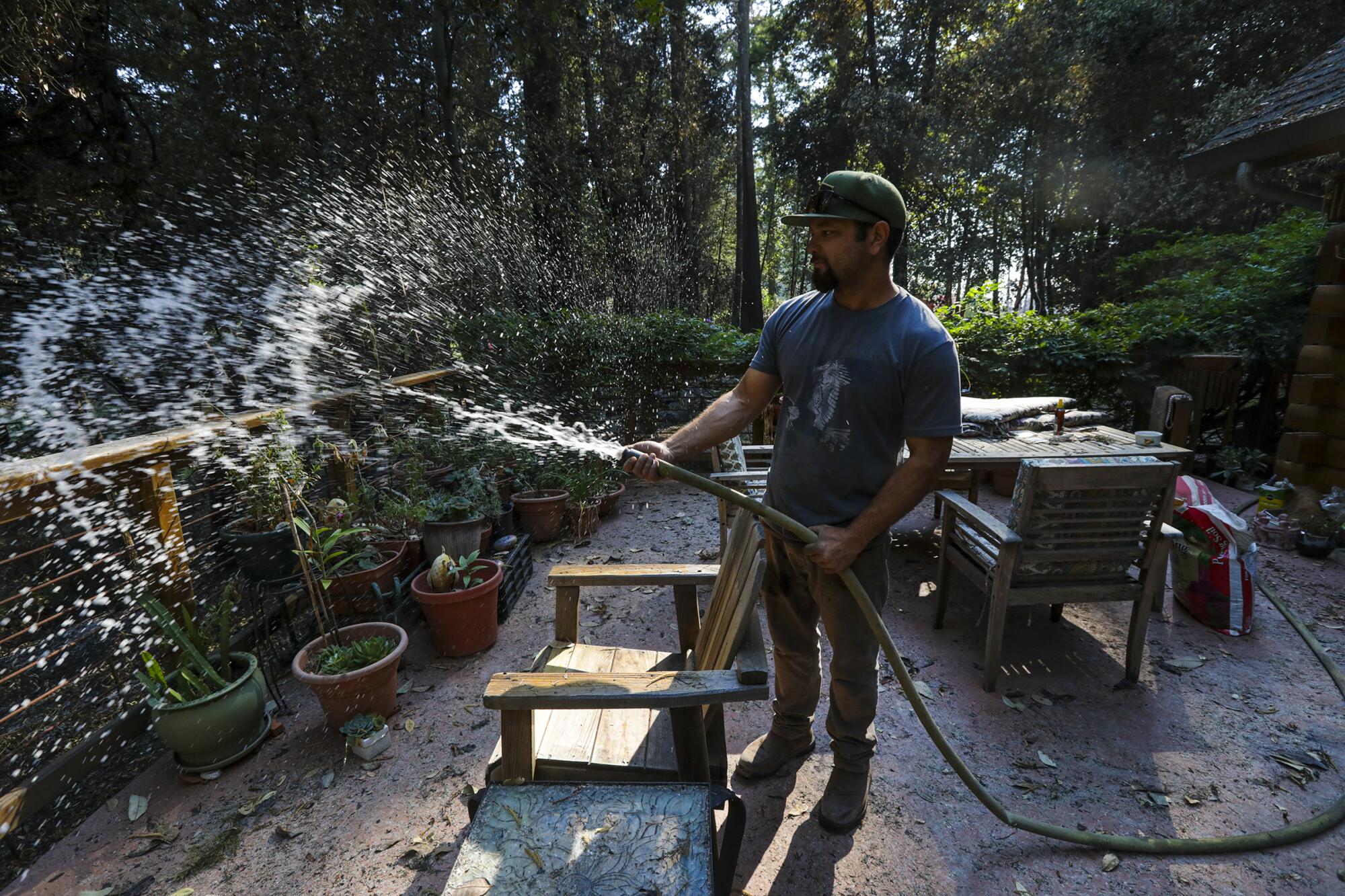
More to Read
Sign up for Essential California
The most important California stories and recommendations in your inbox every morning.
You may occasionally receive promotional content from the Los Angeles Times.
